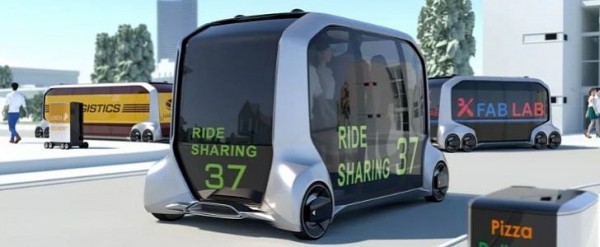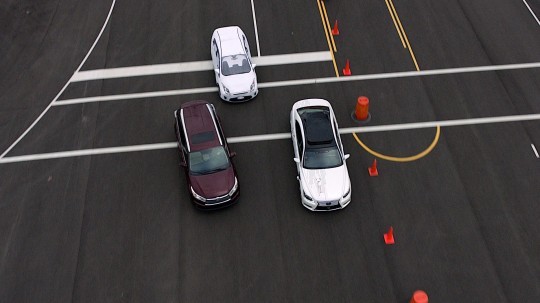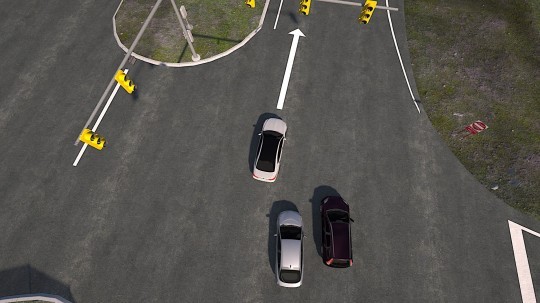
In 2015, at about the same time the auto industry was seriously beginning to shift its focus on making self-driving cars a reality, Toyota created the Toyota Research Institute (TRI), whose sole goal is to research automated driving technologies.
Since its creation, TRI gave birth to two distinct and yet complementary technologies: Chauffeur and Guardian, the former aimed at offering full autonomy, with the need for human input completely removed, and the latter hoping to provide the driver with amplified and augmented control.
Both systems are currently in various testing stages. During this year’s Consumer Electronics Show, the latest info about Guardian was shared with the public. WHAT IS GUARDIAN
Guardian is a driver assistance system developed to step in whenever “it anticipates or identifies a pending incident” and, together with the driver, act to avoid or at least mitigate the danger.
Toyota says the system has been designed to be similar to the ones deployed on aircraft. There, a so-called flight envelope protection system prevents pilots from making commands that would force the aircraft to perform actions outside of its structural and aerodynamic operating limits.
 Just as with airplanes, the Guardian is meant to detect and interpret what the driver is about to do, thousands of times a second, and correlate that with the readings it gets from the environment. It will be there to restrict excessive inputs from drivers caught by surprise by an unexpected situation, or it will allow them to speed up their reaction time, as the case may be.
Just as with airplanes, the Guardian is meant to detect and interpret what the driver is about to do, thousands of times a second, and correlate that with the readings it gets from the environment. It will be there to restrict excessive inputs from drivers caught by surprise by an unexpected situation, or it will allow them to speed up their reaction time, as the case may be.
Guardian allows the driver to have full control of the car, except in those cases when it determines the driver’s actions are not fast, good or inspired enough to prevent an incident. It then takes over “and employs a corrective response in coordination with driver input.”CASE STUDY
During the CES presentation, TRI’s CEO Gill Pratt projected for the audience a real-life crash that involved three vehicles. One of them happened to be a self-driving Toyota running on manual mode, with sensors and cameras of the automated system up and running.
At the time of the crash, the Toyota was surveying tunnels and bridges in the San Francisco Bay area. At one point, while crossing an intersection together with two other cars that were traveling in the same direction, a dangerous maneuver from one of them caused the three to collide.
No one was hurt, and TRI says this incident was heaven sent, as all the data downloaded from the car was then fed into computers to see whether the Guardian system could have prevented at least one of the cars, the Toyota, from being caught in the skirmish.
A simulation was devised to make the system learn about the situation and then engineers made it decide how to proceed. The scenario was then put to the test track using real vehicles and a guided, soft-target, dummy-vehicle.
 As it happened, in the simulation of the incident mentioned earlier, the Guardian system decided to accelerate in order to avoid the oncoming cars. And here’s one of the main difference between a regular driver assistance system, which usually only applies the brakes: the Guardian can also decide to speed up, thus avoiding being encroached by the other two cars. OUTLOOK
As it happened, in the simulation of the incident mentioned earlier, the Guardian system decided to accelerate in order to avoid the oncoming cars. And here’s one of the main difference between a regular driver assistance system, which usually only applies the brakes: the Guardian can also decide to speed up, thus avoiding being encroached by the other two cars. OUTLOOKToyota is currently working on teaching Guardian a variety of scenarios, but says the challenges it faces are huge, That because unlike in an airplane, a car’s envelope protection is much more dynamic, and is much more dependable on the actions of others and an ever-changing environment.
When it is ready, the system will be deployed as standard on all the cars it will manufacture based on the e-Palette platform shown at CES 2018. These cars are the fully-automated vehicles the carmaker will deploy as part of its offering in the carsharing and delivery fleets.
Guardian will be capable of integration with whatever autonomous system other carmakers develop, meaning Toyota will sell the system to all those interested, including rival auto makers.








